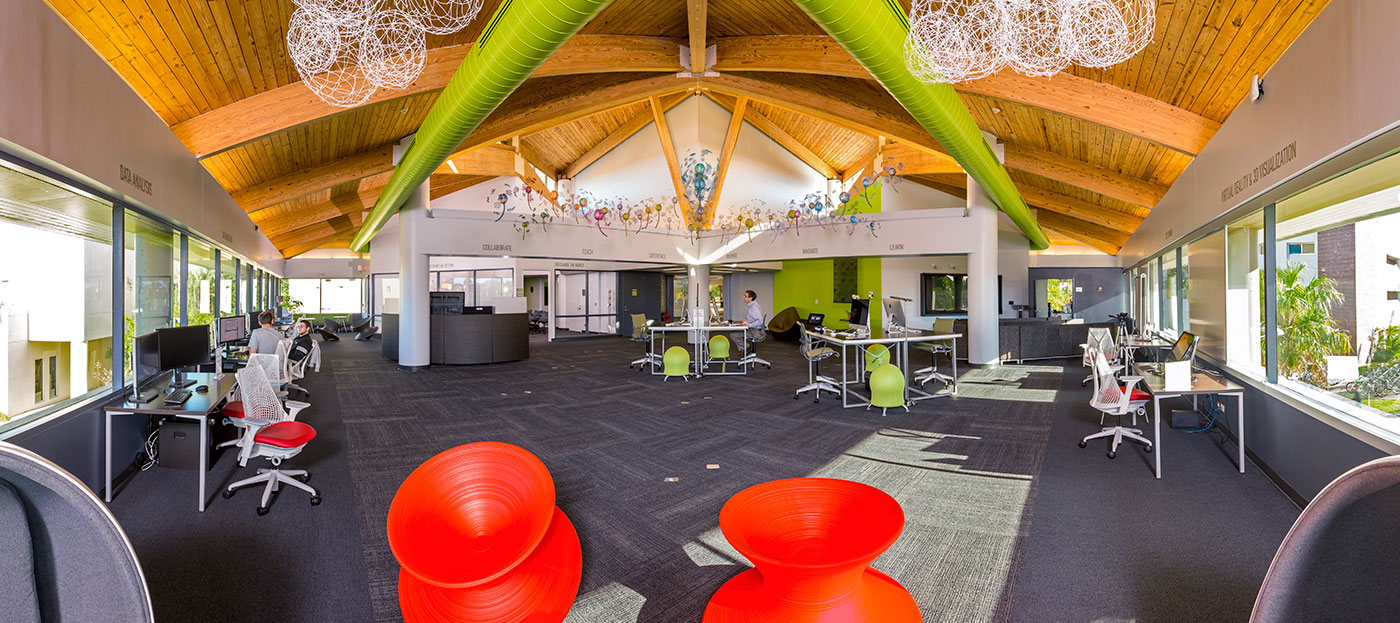3D Printing
3D Printing Services
As part of its mission, Evans Library strives to provide resources and services that support and advance education and scholarship. 3D printing promotes creativity and innovation and provides an opportunity for our students and faculty to further their learning experience.
To submit a 3D print job to the library, complete the 3D Printing Form and send it with your .stl file to gallagherm@fit.edu.
Equipment
Bamboo X1E 3D Printer
Print Colors
Black and White
3D Printing FAQ
- What is 3D printing? How does it work?
3D printing is the process of making a physical object from a digital model. It is also known as additive manufacturing because the physical model is built up one layer at a time. uPrint SE Plus 3D printer uses a process called Fused Deposition Modeling (FDM), in which a plastic filament is fed through a heated nozzle which melts the plastic. Computer-controlled motors move the nozzle around to create the shape of a layer, which hardens immediately. The object is built this way, one layer at a time, from the bottom up.
- What are some practical uses of 3D printing?
There are a multitude of practical applications for 3D printing, from aerospace and automotive engineering to prosthetics and other medical uses. 3D printing enables rapid prototyping of design concepts and functional, working models; it is used for low-volume, custom, or on-demand manufacturing.
- What software can I use to make printable 3D models?
There are many different programs that can produce printable 3D models. Most 3D modeling software will output a file type that we can convert to a .stl file. Solid modeling CAD software is more likely to produce a successful print than surface modeling software. A few popular options are SolidWorks, Solidedge, Inventor, 3DS Max, Catia, Google Sketchup, IronCAD AutoCAD, Rhino 3D, ProEngineer and UGS NX. If you don't want to create your own, you can check the MakerBot Thingiverse archives for objects, models, and designs that you can bring in to be printed. There are a few other downloadable files available for free on the web.
- How do I get my file printed?
To submit a print job, complete the 3D Print Submission Form and email it with your .stl file to
- How much detail can the 3D printers give?
- The X1E is engineered for high temperature printing with a 320°C maximum nozzle temperature to support advanced filaments like PPA-CF/GF, PPS, and PPS-CF. The active heated chamber up to 60°C reduces warping. AI-powered vibration compensation, extrusion control, and failure detection ensure reliable print success.
- With a 256 x 256 x 256mm build volume and 500mm/s speeds, the X1E enables efficient batch production. Multi-material capabilities are powered by the included Bambu AMS for auto filament switching and reloading. Robust network security is offered through WPA2-Enterprise Wi-Fi, LAN connectivity, and physical kill switches.
- Heavy-duty air filtration combines a G3 pre-filter, H12 HEPA filter, and coconut shell activated carbon to effectively trap odors and particles. The modular toolhead, CoreXY motion system, and rigid steel/aluminum construction produce professional quality prints.
- The X1E runs on 100-240V power with a 750W max draw. Connectivity includes Ethernet, Wi-Fi, and a 5" touchscreen. It works with common slicers and Bambu Studio software. With its blend of cutting-edge hardware and intelligent software features, the X1E delivers an enhanced experience for demanding applications.
- What's the size limit of 3D-printed objects?
256 x 256 x 256 mm (~10.25 x 10.25 x 10.25 in)
Additional Information
- Bamboo X1E
- Hubs - How to design parts for FDM 3D printing
- Open Source 3D printing course on Wikiversity

 Give to Florida Tech
Give to Florida Tech 